
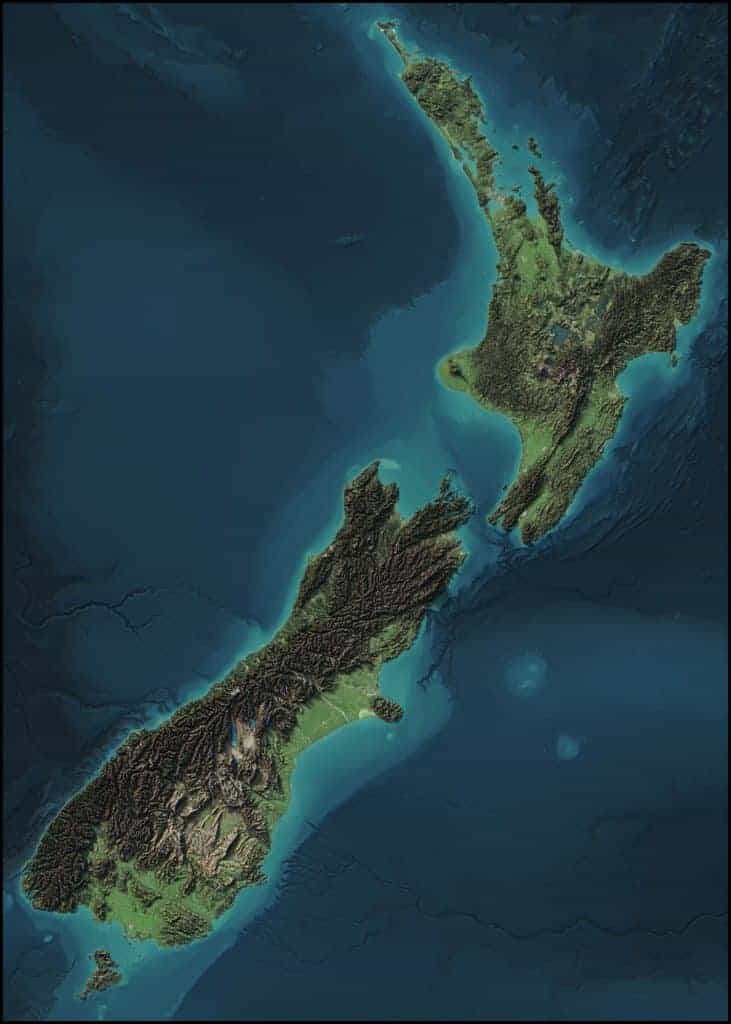
New Zealand has a variety of premier option landscapes, seascapes, cityscapes and many other ‘scapes’.
Spectacular glaciers, picturesque fiords, rugged mountains, vast plains, rolling hillsides, subtropical forest, volcanic plateau, miles of coastline with gorgeous sandy beaches – it’s all here.
Lying in the south-west Pacific, New Zealand consists of two main islands – the North Island, or Te Ika-a-Māui, and the South Island, or Te Waipounamu are separated by Cook Strait. The other five largest inhabited islands are Stewart Island (across the Foveaux Strait), Chatham Island, Great Barrier and Waiheke Islands (in the Hauraki Gulf) and D’Urville Island (in the Marlborough Sounds).
New Zealand’s oldest rocks are over 500 million years old, once part of Gondwanaland. That super-continent split up around 160 million years ago, where New Zealand separated from it roughly 85 million years ago. New Zealand’s seperation and continual geological activity is in part due to its two tectonic plates – the Pacific and the Australian.
This subterranean activity indulges New Zealand with some gloarious geothermal areas and rejuvenating hot springs. Our kiwi ingenuity utilises that power by providing electricity and heating.
New Zealand has over 15,000 kilometres of beautiful and varied coastline.
About a fifth of the North Island and two-thirds of the South Island are mountains.
New Zealand’s Southern Alps have a number of glaciers, the largest being Tasman glacier, which you can view by taking a short walk from Mount Cook village. New Zealand’s most famous glaciers are the Franz Josef and Fox on the South Island’s West Coast.
The Southern Alps stretch for 500 kilometres down the South Island. A large mountain with a lake in the foreground sees Aoraki / Mount Cook as the highest point in New Zealand, at 3,724 metres.
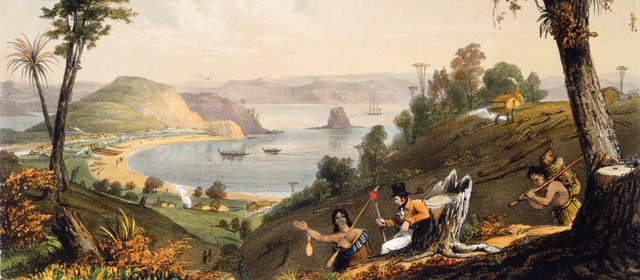
Māori first arrived in New Zealand, specifically thought to be the Hokianga Harbour in Northland, journeying in canoes from Hawaiki 1,000 years ago, guided by the great navigator Kupe. He used the stars and ocean currents for his navigational guides, venturing across the Pacific ocean on his waka hourua (voyaging canoe) from his ancestral Polynesian homeland of Hawaiki.
Today New Zealand is home to more than 5 million people.
In 1840, an agreement between the British Crown and Maori called Treaty of Waitangi was signed. It established British law in New Zealand and is considered New Zealand’s founding document and an important part of the country’s history.
Today, Māori are part of an iwi (tribe), a group of people; descendants of common ancestors associated with a certain region in New Zealand. Each iwi has their own hapū (sub-tribes). The seven waka that arrived to Aotearoa were called Tainui, Te Arawa, Mātaatua, Kurahaupō, Tokomaru, Aotea and Tākitimu.
The first European to sight New Zealand was Dutch explorer Abel Tasman. He was on an expedition to discover a great Southern continent ‘Great South Land’ that was believed to be rich in minerals. In 1642, while searching for this continent, Tasman sighted a ‘large high-lying land’ off the West Coast of the South Island. But it was the British who made New Zealand part of their empire. Dutch cartographers subsequently renamed Tasman’s discovery Nova Zeelandia from Latin, after the Dutch province of Zeeland. This name was later anglicised to New Zealand. Aotearoa; often translated as ‘land of the long white cloud’ is the current Māori name for New Zealand.
According to Māori and Polynesian myths and legends, Māui was the gifted and clever demigod, who, after a miraculous birth and upbringing won the affection of his supernatural parents.
Māori legend says that one-night Māui’s four brothers planned to go fishing and leave him behind. Overhearing their plans and not wanting to be left out, Māui hid under the floorboards of his brother’s canoe and waited until they were far away from the shore before revealing himself. He had carved a magic fishhook from an ancestors’ jawbone and he cast it deep into the sea, chanting powerful words.
Soon, Māui realised he had caught something. Something huge! With the help of his brothers, the catch was hurled to the surface of the water. Much to their surprise the fish they had caught was in fact a huge piece of land: ‘Te Ika a Māui’ (Māui’s fish), which we know today as the North Island.
‘Te Waka a Māui’ (Māui’s canoe) or what we know now as the South Island is said to be the waka or canoe that Māui and his brothers fished from. It’s believed that the Kaikōura Peninsula on the east coast of the South Island is the place where the seat of the canoe was situated, where Māui stood to haul in his giant catch.
Stewart Island-Rakiura is believed to be the anchor from the canoe and is named ‘Te Punga a Māui’ (Māui’s anchor stone).
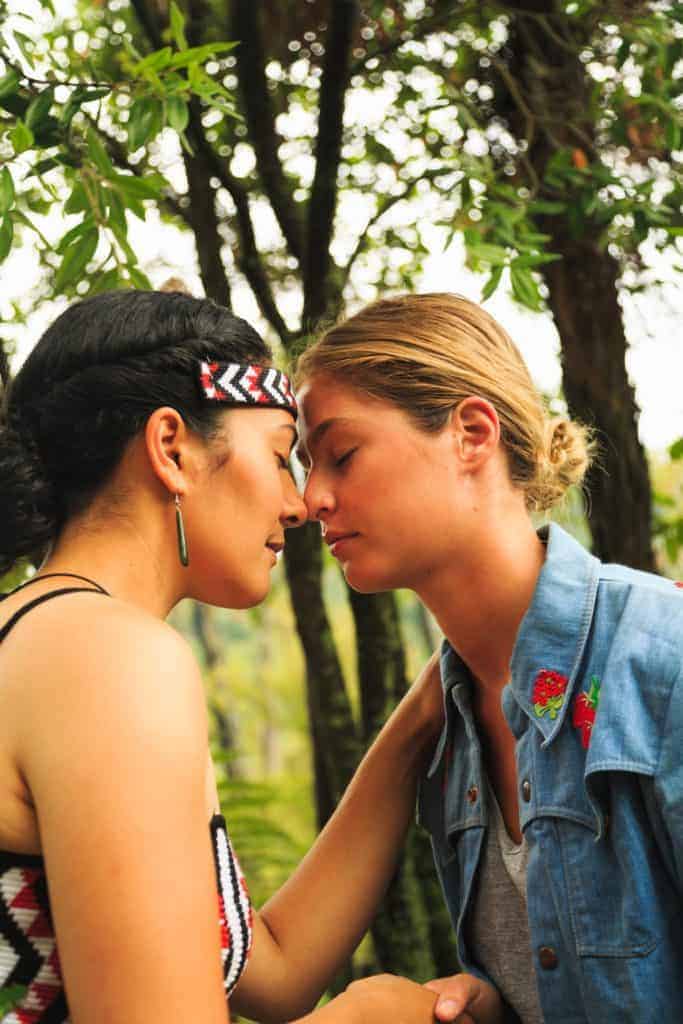
New Zealanders are friendly and down-to-earth people who embrace the spirit of manaakitanga, or hospitality.
New Zealand is a predominantly urban country, with 84.1% of the population living in urban areas, and 51.4% of the population living in the seven cities with populations exceeding 100,000. Auckland, with over 1 million residents, is by far the largest city.
Today, the population of New Zealand is made up of people from a range of backgrounds; 70% are of European descent, 16.5% are indigenous Māori, 15.1% Asian and 8.1% non-Māori Pacific Islanders.
Geographically, over three-quarters of the population live in the North Island, with one-third of the total population living in Auckland. The other main cities of Wellington, Christchurch and Hamilton are where the majority of the remaining Kiwis dwell.
Why are New Zealanders called Kiwis? The name ‘kiwi’ comes from the curious little flightless bird that is unique to New Zealand.
Māori people have always held the kiwi bird in high regard. Their feathers were used to make ‘kahu kiwi’, valuable cloaks worn by tribal chiefs.
During the First World War, New Zealand soldiers were referred to as ‘kiwis’, and the nickname stuck.
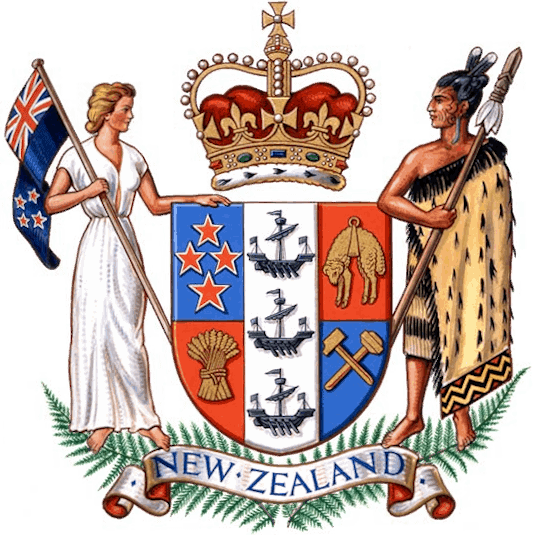
New Zealand is a constitutional monarchy with a parliamentary democracy, although its constitution is not codified. Elizabeth II is the queen of New Zealand and thus the head of state. The queen is represented by the governor-general, whom she appoints on the advice of the prime minister.
The New Zealand Parliament holds legislative power and consists of the queen and the House of Representatives. The House of Representatives is democratically elected, and a government is formed from the party or coalition with the majority of seats. Members of Cabinet make major decisions collectively and are therefore collectively responsible for the consequences of these decisions. A parliamentary general election must be called no later than three years after the previous election.
You cna read more about New Zealand news on the two most poular News Sources: The Herald and Stuff

New Zealand has an advanced market economy, ranked 14th in the 2019 Human Development Index and third in the 2020 Index of Economic Freedom. It is a high-income economy with a nominal gross domestic product (GDP) per capita of US$36,254. The currency is the New Zealand dollar, informally known as the “Kiwi dollar”; it also circulates in the Cook Islands (see Cook Islands dollar), Niue, Tokelau, and the Pitcairn Islands.
Historically, extractive industries have contributed strongly to New Zealand’s economy, focussing at different times on sealing, whaling, flax, gold, kauri gum, and native timber. The first shipment of refrigerated meat on the Dunedin (ship) in 1882 led to the establishment of meat and dairy exports to Britain, a trade which provided the basis for strong economic growth in New Zealand. High demand for agricultural products from the United Kingdom and the United States helped New Zealanders achieve higher living standards than both Australia and Western Europe in the 1950s and 1960s. In 1973, New Zealand’s export market was reduced when the United Kingdom joined the European Economic Community and other compounding factors, such as the 1973 oil and 1979 energy crises, led to a severe economic depression.
New Zealand is heavily dependent on international trade, particularly in agricultural products. Exports account for 24% of its output, making New Zealand vulnerable to international commodity prices and global economic slowdowns. Food products made up 55% of the value of all the country’s exports in 2014; wood was the second largest earner (7%). New Zealand’s main trading partners, as at June 2018, are China (NZ$27.8b), Australia ($26.2b), the European Union ($22.9b), the United States ($17.6b), and Japan ($8.4b). Tourism plays a significant role in the economy, contributing $12.9 billion (or 5.6%) to New Zealand’s total GDP and supporting 7.5% of the total workforce in 2016. In 2017, international visitor arrivals were expected to increase at a rate of 5.4% annually up to 2022.
Wool has historically been one of New Zealand’s major exports. Wool was New Zealand’s major agricultural export during the late 19th century Even as late as the 1960s it made up over a third of all export revenues, but since then its price has steadily dropped relative to other commodities, and wool is no longer profitable for many farmers. In contrast, dairy farming increased, with the number of dairy cows doubling between 1990 and 2007, to become New Zealand’s largest export earner. In the year to June 2018, dairy products accounted for 17.7% ($14.1 billion) of total exports, and the country’s largest company, Fonterra, controls almost one-third of the international dairy trade.
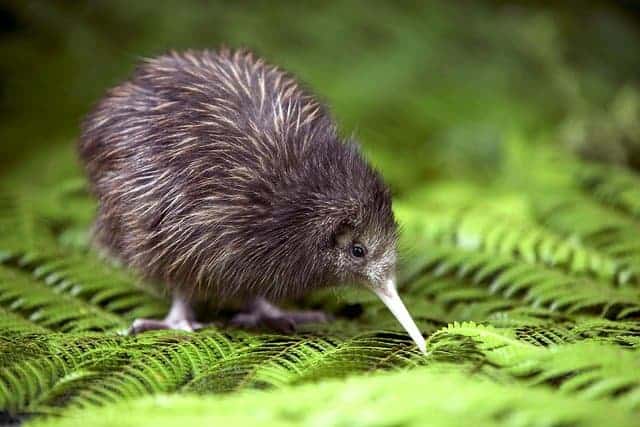
Since New Zealand drifted away from the super-continent, a unique flora and fauna has evolved, leaving a land full of interesting plants and creatures.
Here is a great resource: New Zealand Fruit and Food Share Map. Find fruit and food in your neighbourhood, free!
Want to put New Zealand on more on maps? Start counting trees and ‘greenspace’ on Google Street View and add it to Treepedia.
New Zealand’s geographic isolation for 80 million years and island biogeography has influenced evolution of the country’s species of animals, fungi and plants. About 82% of New Zealand’s indigenous vascular plants are endemic, covering 1,944 species across 65 genera. The two main types of forest are those dominated by broadleaf trees with emergent podocarps, or by southern beech in cooler climates. The remaining vegetation types consist of grasslands, the majority of which are tussock.
Before the arrival of humans, an estimated 80% of the land was covered in forest, with only high alpine, wet, infertile and volcanic areas without trees. Much of the remaining forest fell after European settlement, being logged or cleared to make room for pastoral farming, leaving forest occupying only 23% of the land.
Other indigenous animals are represented by reptiles (tuatara, skinks and geckos), frogs, spiders, insects (wētā), and snails. Some, such as the tuatara, are so unique that they have been called living fossils. Marine mammals, are abundant, with almost half the world’s cetaceans (whales, dolphins, and porpoises) and large numbers of fur seals reported in New Zealand waters. Many seabirds breed in New Zealand, a third of them unique to the country. More penguin species are found in New Zealand than in any other country.
New Zealand has abundant and diverse marine life, and whale watching and swimming with dolphins are two of our most highly recommended experiences. The small Hector’s dolphin is the world’s rarest dolphin and only found in New Zealand waters. Seals, penguins and a whole host of fish and shellfish also thrive in New Zealand’s fertile marine environment.
Over 20 percent of New Zealand is covered in national parks, forest areas and reserves – and these are the best places to observe our native flora and fauna. Our mainland also has two World Heritage Areas – Tongariro in the Central North Island and Te Wahipounamu in the south-west of the South Island. New Zealand has 14 national parks contain an incredible variety of unspoiled landscape and vegetation with 34 marine reserves.
The tuatara is a unique relic of the past – the only beak-headed reptile left in the world. Every species of this reptile family, except the tuatara, died out around 65 million years ago. Tuatara can live for over 100 years, and are only found on protected offshore islands. Tuatara are not a threat to humans. Tuatara can live for over 100 years, and are only found on protected offshore islands.
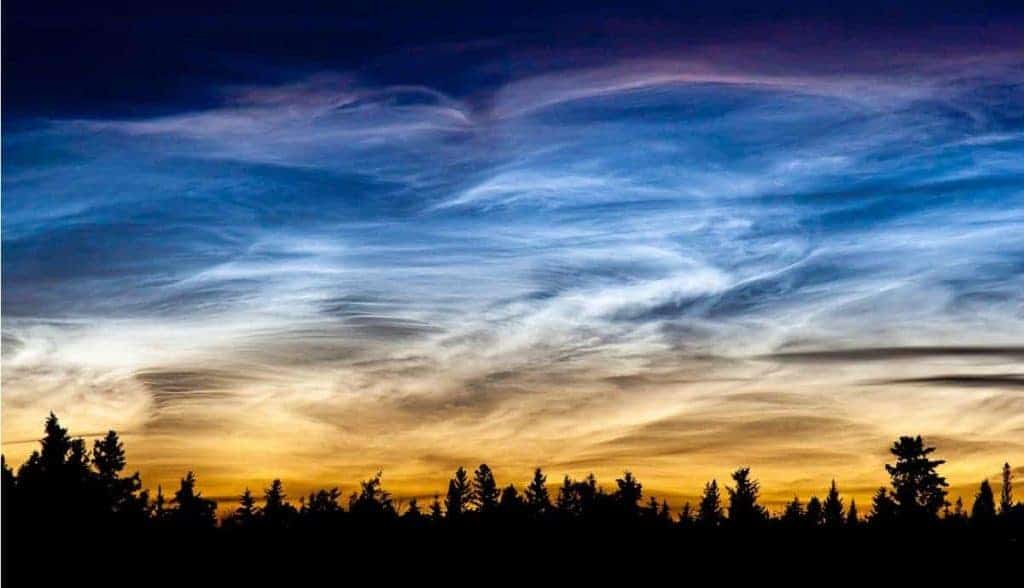
Weather in New Zealand can be unpredictable. Locals like to joke that you can experience four seasons in one day! Find out what to expect from the weather during your visit.
Our two trusted weather and climate sources come from:
New Zealand’s climate varies wildly. The far north has subtropical weather during summer, while inland alpine areas of the South Island can be as cold as -10°C (14°F) in winter.
The average New Zealand temperature decreases as you travel south. January and February are the warmest months, and June and July are the coldest months of the year.
New Zealand’s climate is predominantly temperate maritime (Köppen: Cfb), with mean annual temperatures ranging from 10 °C (50 °F) in the south to 16 °C (61 °F) in the north. Historical maxima and minima are 42.4 °C (108.32 °F) in Rangiora, Canterbury and −25.6 °C (−14.08 °F) in Ranfurly, Otago.
Summer is the most popular time to visit New Zealand. Over December, January and February, the number of visitors increases, as people arrive from overseas to travel while the weather is warm. Summer holidays mean more Kiwis are travelling New Zealand too, making the most of the sunshine and Christmas break.
Winter in New Zealand is the best time to visit if you’re enthusiastic about snow sports. With a light dusting of snow, Queenstown and the Central Plateau are transformed into winter wonderlands. If you want to ski or snowboard your way down the slopes of the Southern Alps, the best month to visit New Zealand is either July or August.
Spring
September – November
Average daytime temperature:
16 – 19˚C (61 – 66˚F)
Summer
December – February
Average daytime temperature:
20 – 25˚C (68 – 77˚F)
Autumn
March – May
Average daytime temperature:
17 – 21˚C (62 – 70˚F)
Winter
June – August
Average daytime temperature:
12 – 16˚C (53 – 61˚F)
Sunshine
Most places in New Zealand receive over 2,000 hours of sunshine a year – around 83 sunny days. The sunniest areas, Bay of Plenty, Hawke’s Bay and Nelson/Marlborough, receive over 2,350 hours of sunshine. As New Zealand observes daylight saving, during summer months daylight can last up until 9.30pm.